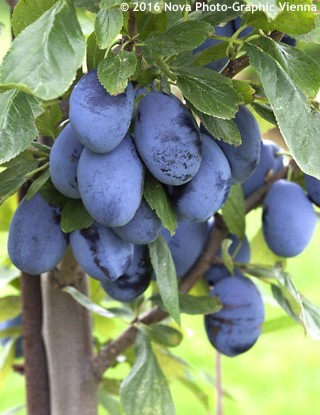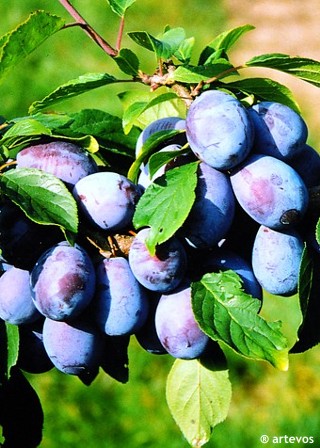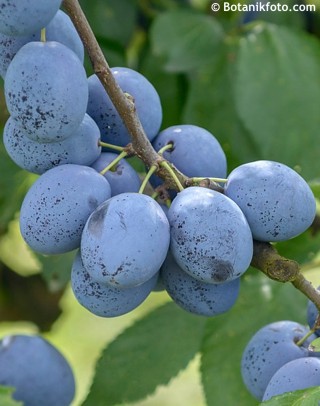
Prunus domestica 'ŠVESTKA DOMÁCÍ' ('Quetsche d'Alsace') European plum - midseason
size/type
small tree,small tree
usual height
3-5m
usual width
2-3,5m
leaves
deciduous broadleaf
colour of leaves
flowers
showy
colour of flowers
blooming time
May-May
location
full sun
USDA zone (lowest)
5 (down to -29°C)
winter protection
for zone 5+6

for zone 7

categorized
Description of the plant:
Quetsche d’Alsace is one of the oldest European plum varieties that was first described in German Alsace in 1914, hence its name. Still, it is so old and of unclear origin that most producing countries gave it its own name in their own language. We call it Švestka domácí (‘house plum’) and it is believed to be a natural hybrid between prunus cerasifera and prunus spinosa from Caucasus.Quetsche d’Alsace is an excellent plum with high sugar content and a little bit of acidity giving it a strong flavour. The fruit is oval, about 4 cm long, deep purple blue. The flesh is golden orange, juicy, and free-stone. Harvest begins between mid and late September upon location. It is best suited for eating right off the tree, or processed into preserves, canned or dried, and is also among the most popular varieties for production of typical Czech (or precisely Moravian) plum brandy. In order to extend its shelf life it should be picked up along with the stalk a few days before the skin develops its full colour. It is self-fertile and does not need pollination partner to give high yields, moreover it pollinates most other midseason plums and gages. The tree has moderate vigour and forms an upright, narrowly oval crown.
Plum trees like fertile, well-drained, moderately moist but never wet soil. On dry summers watering is essential during the fruit formation. They are taller than for example peach trees but can easily be kept smaller by pruning in spring, best done after flowering. Reduce long shoots by a third and remove all thin and weak branches. Still, when a strong and symmetrical crown has developed, trees are best left to their own devices. It is fully hardy to min. -29°C (USDA zone 5).
Last update 29-10-2016
QUICK PRICE OVERVIEW
CURRENTLY SOLD OUT














